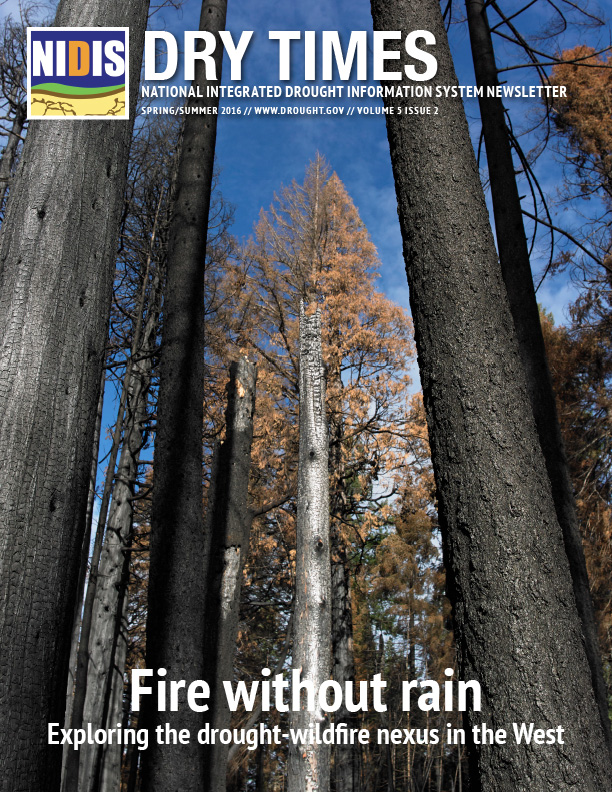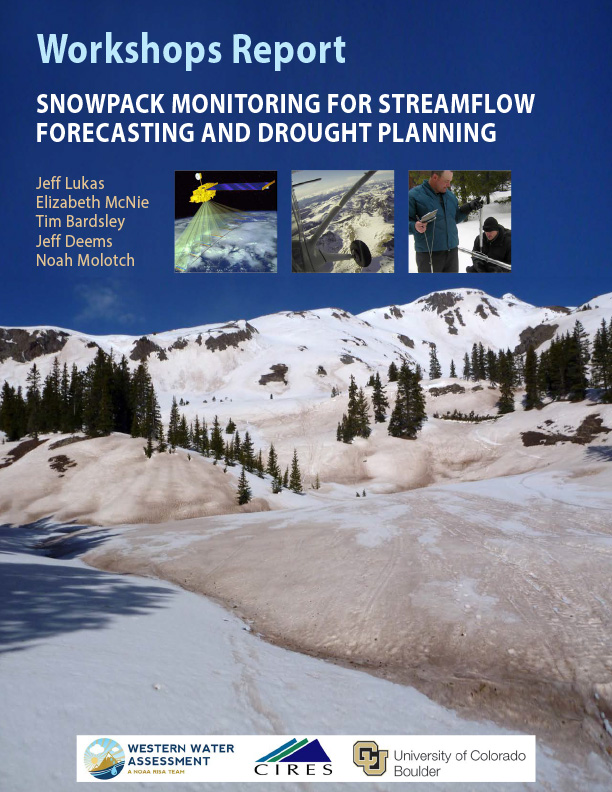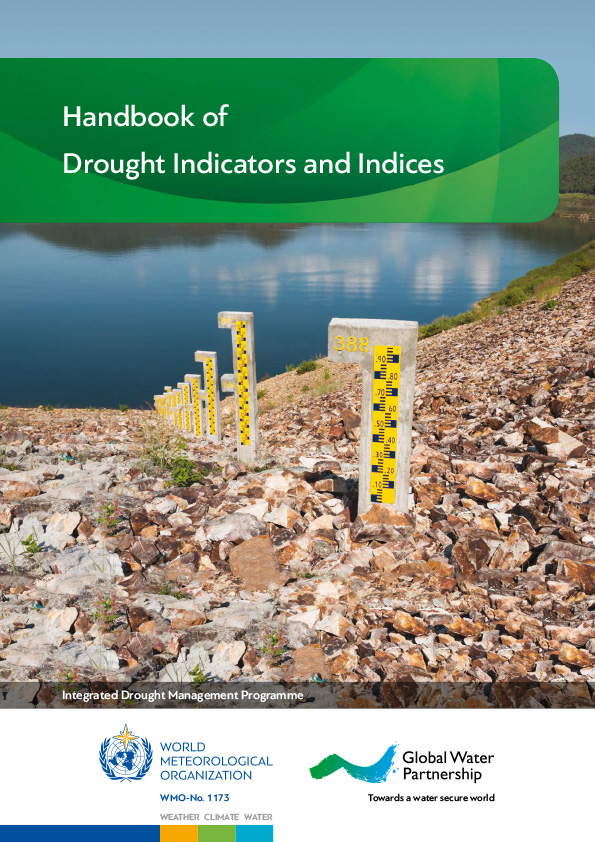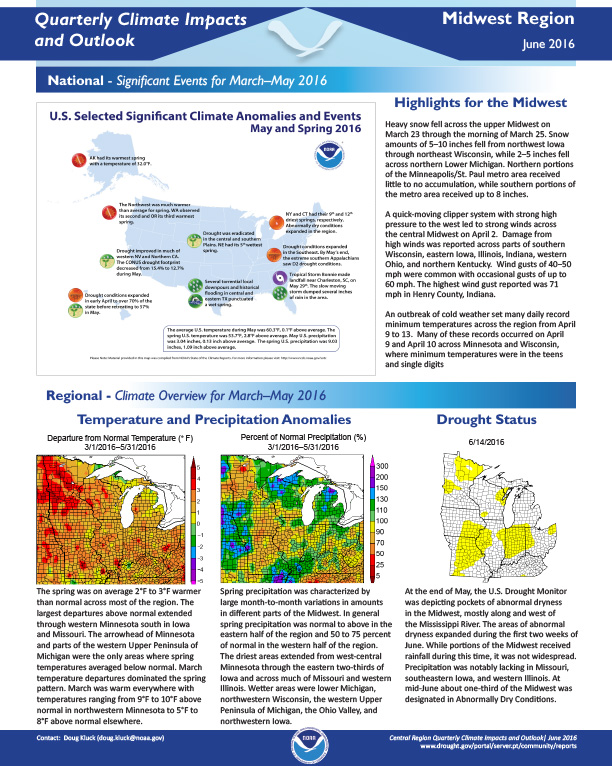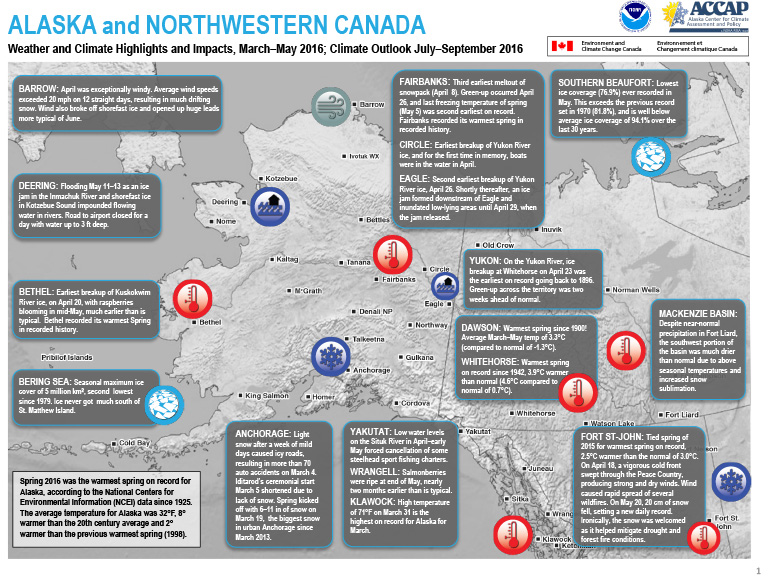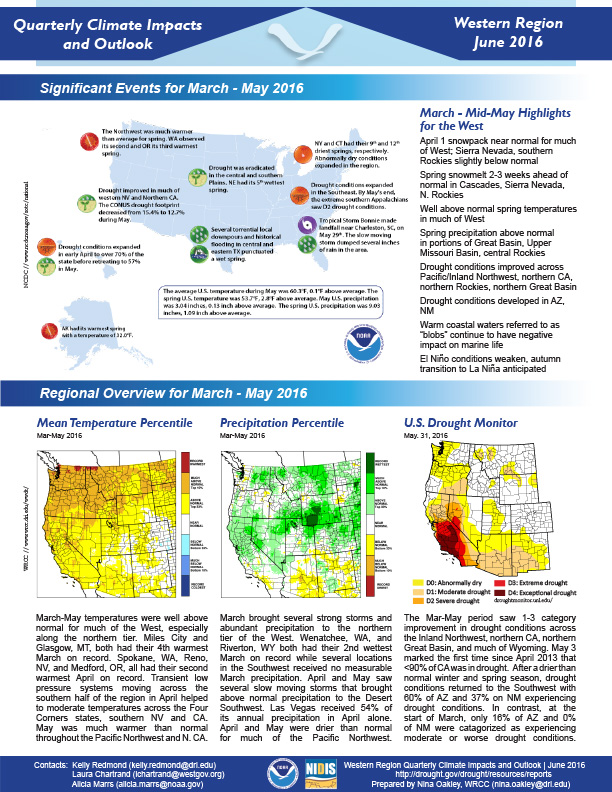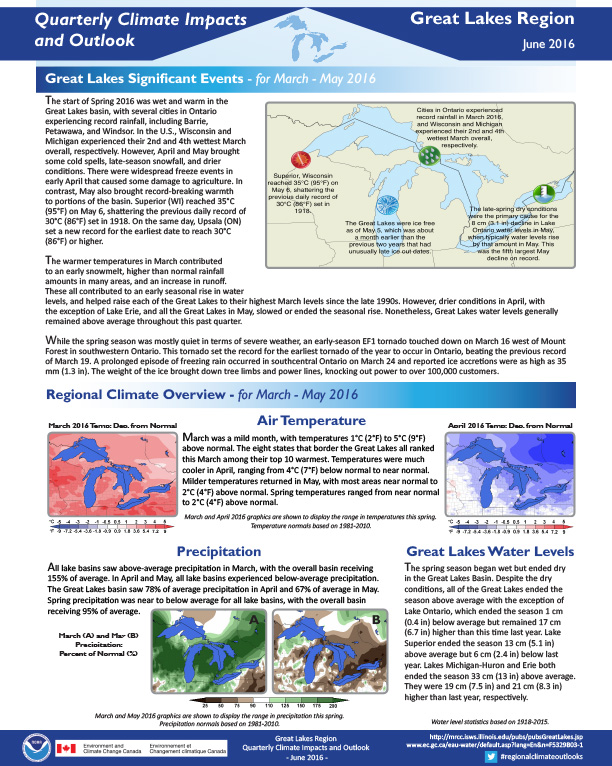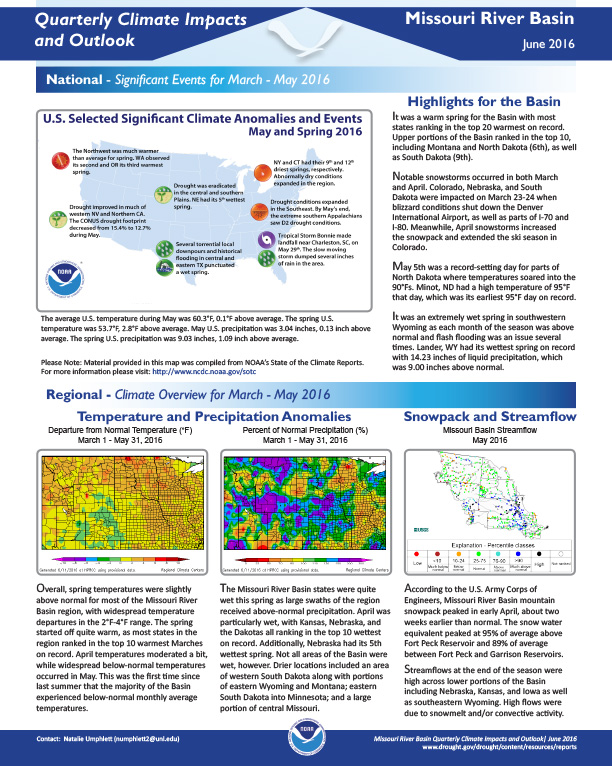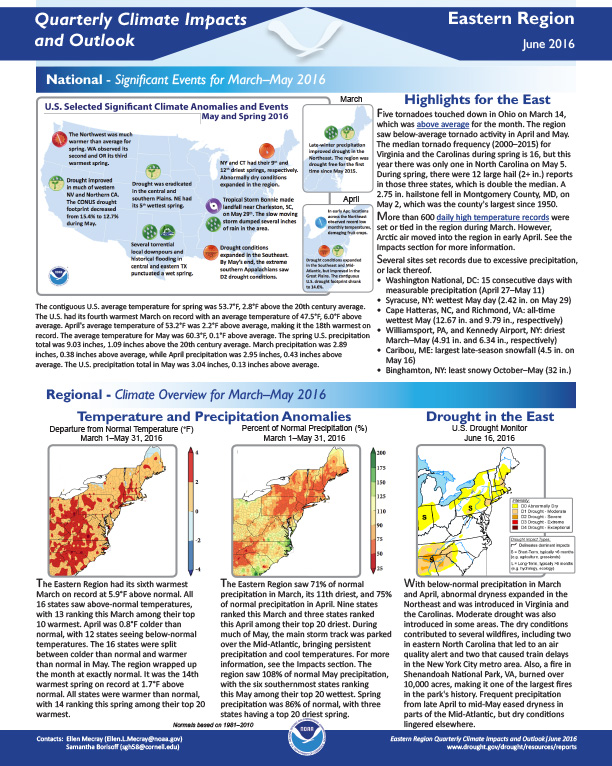For the latest forecasts and critical weather information, visit weather.gov.
Outlook responds to worsening drought conditions in the Northeast, summer 2016, including information on weather patterns, precipitation, water resources, fire danger, drought advisories, agriculture, and what may be ahead.
For water providers and others in the Rocky Mountain West who depend on the pulse of runoff from the melting snowpack from April through July, snowpack monitoring is drought monitoring. A well below average snowpack as measured by snow-water equivalent (SWE) is a harbinger of not only low water supply but also other drought impacts, such as increased fire risk and below-normal summer soil moisture.
The purpose of this handbook is to cover some of the most commonly used drought indicators/indices that are being applied across drought-prone regions, with the goal of advancing monitoring, early warning and information delivery systems in support of risk-based drought management policies and preparedness plans.
Quarterly Climate Impacts and Outlook for the Midwest Region for March – May 2016. Dated June 2016.
Quarterly Climate Impacts and Outlook for Alaska and Northwestern Canada for March – May 2016. Dated June 2016.
Quarterly Climate Impacts and Outlooks for the Pacific Region for March – May 2016. Dated June 2016.
Quarterly Climate impacts and Outlook for the Great Lakes Region for March – May 2016. Dated June 2016.
Quarterly Climate Impacts and Outlook for the Missouri River Basin March – May 2016. Dated June 2016.
Quarterly Climate impacts and Outlook for the Eastern Region for March – May 2016. Dated June 2016.



